The Navigation Computer: Wind Finding
A pilot needs to know what wind is affecting his aircraft in flight at his particular level. This knowledge is available from the meteorological forecast, but the problem with forecasts is that they cover a large area and their period of validity extends over several hours. They can, therefore, only be a general guide for your area. If you want to find out exactly what wind is affecting you in your local area at the present time, the Navigation Computer can be used to find the wind.
Take the following situation:
You are heading 060°(T) at a TAS on 140 knots, in order to fly some planned track.
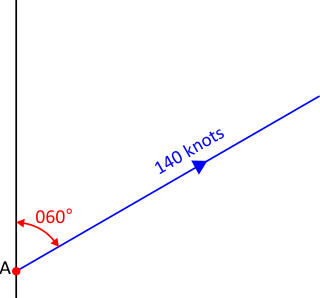
Once airborne, you get a fix at B, say 20 minutes after passing over a known landmark A.
You measure the track angle from A to B on your chart and find that it is 065°(T).
You also measure the distance A to B on your chart and find that it is 40 nautical miles.
If you have flown 40 NM in 20 minutes, your ground speed must be 120 knots.
You now know the following:
Heading = 060°(T)
TAS = 140 knots
Track = 065°(T)
Ground speed = 120 knots
Your triangle of velocities looks like this:
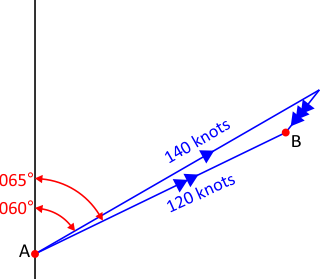
What is the wind velocity?
On your Navigation Computer, put the heading 060° against the heading index and the TAS of 140 knots against the blue circle.
The track is 065°, which means you have 5° starboard drift. Make a mark where the 5° S line crosses 120 knots ground speed.
This is the wind point.
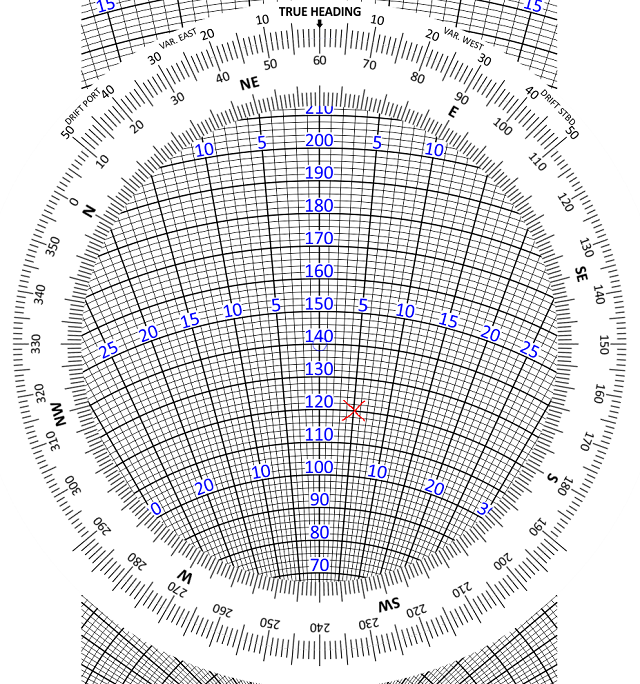
Your triangle of velocities looks like this:
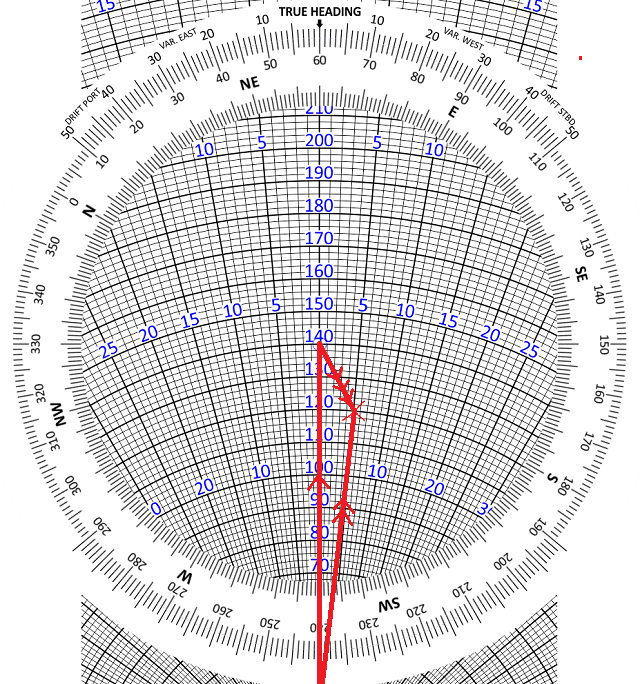
Now we need to measure the wind.
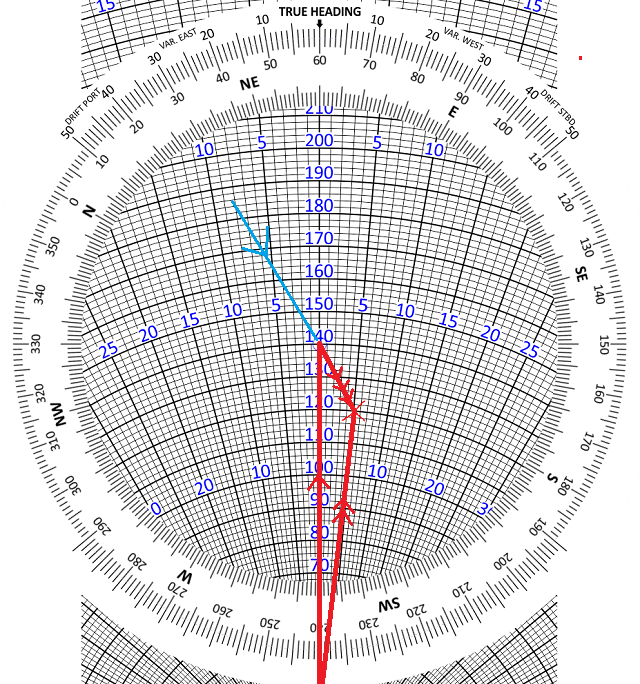
You can see from the wind face in its present position that the wind direction is from about 030° and that the wind strength is about 20 knots.
However, we need to measure it a bit more accurately than this.
This is the only reason we rotate the wind vector - to measure it more accurately.
Rotate the wind cross to the 6 o’clock position. You can now read the direction accurately from the 12 o’clock index.
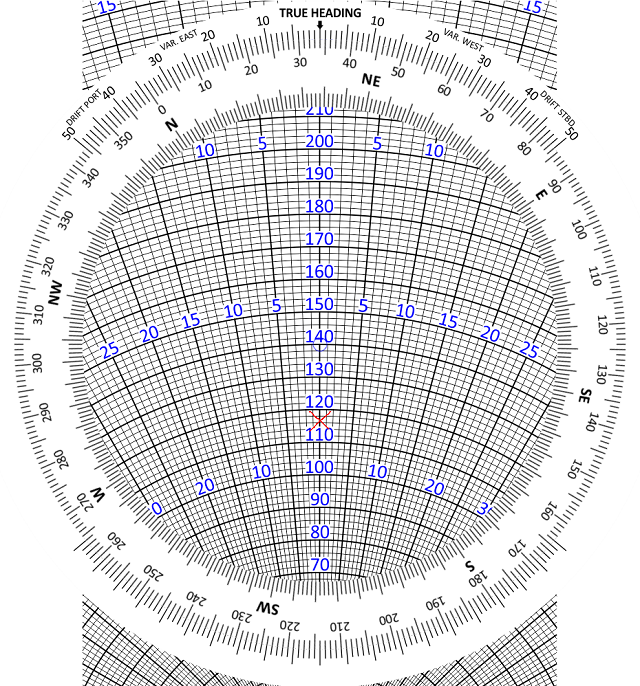
You can also read the length of the wind vector accurately.
So the W/V is, in this example, 034°/23 knots.
This is the wind that has affected you over the last 20 minutes. It will be far more recent and far more local than any area met forecast.
Next: Multi-drift Winds
© 2022 terms of use privacy policy